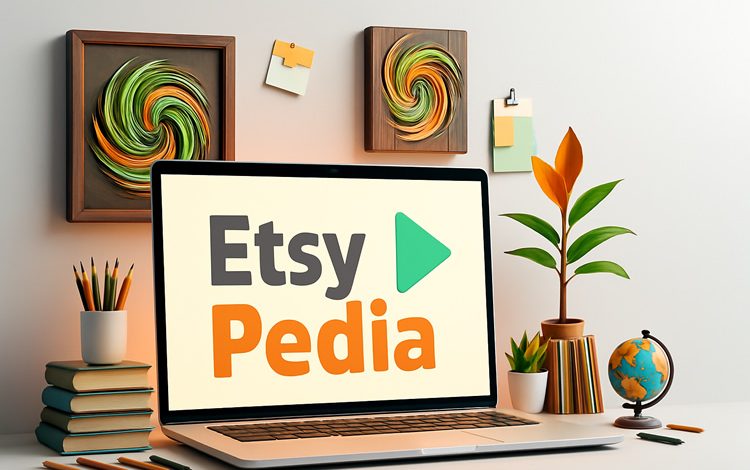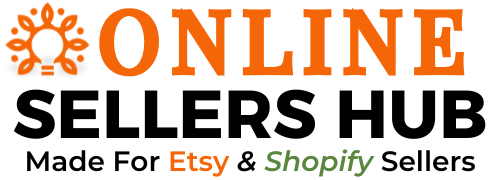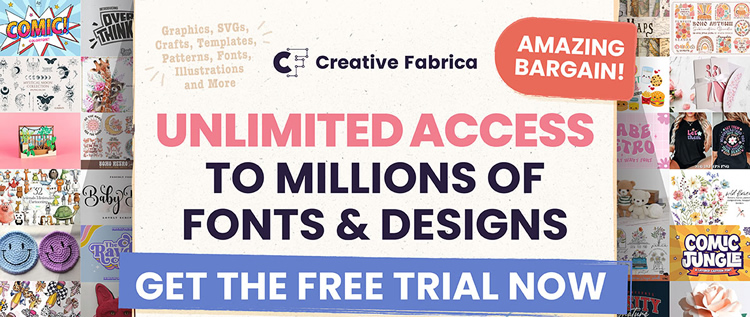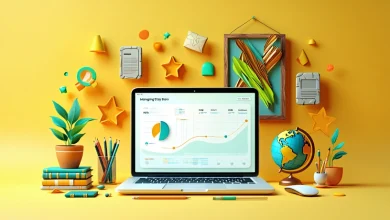Can I sell print-on-demand products on Etsy?

Etsy Pedia: Can I sell print-on-demand products on Etsy?
TL;DR: Thinking about diving into the world of print-on-demand (POD) on Etsy? Yes, you absolutely can! But to truly shine, it’s not just about uploading designs. We’ll uncover the essential steps to make your POD venture a success, including optimizing your listings and understanding what makes buyers click. Ready to unlock some smart strategies? Discover how mastering Etsy SEO can give you a significant edge with our Premium SEO Guide.
Navigating the Print-on-Demand Landscape on Etsy
The allure of print-on-demand is undeniable for aspiring Etsy sellers. The idea of creating unique designs and having a third-party company handle production, printing, and shipping is incredibly appealing. It lowers the barrier to entry, reduces upfront investment, and allows creators to focus on what they do best – designing. But the million-dollar question for many is: Can I sell print-on-demand products on Etsy? The short answer is a resounding yes!
Etsy’s platform is a fantastic marketplace for creative goods, and print-on-demand perfectly aligns with its ethos of unique and personalized items. However, success in the competitive Etsy landscape requires more than just having a design. It demands a strategic approach to marketing, listing optimization, and understanding your customer.
This comprehensive guide will walk you through everything you need to know to launch and grow a thriving print-on-demand business on Etsy. We’ll cover how to choose products, find reliable POD partners, create compelling listings, and leverage Etsy’s features to reach a wider audience.
Understanding the Print-on-Demand Model for Etsy Sellers
Before we dive into the “how,” let’s clarify what print-on-demand truly means in the context of Etsy. POD is a business model where you create designs and partner with a print provider. When a customer orders a product featuring your design, the print provider prints, packages, and ships the item directly to the customer. You never handle inventory.
The Advantages of POD for Etsy Sellers
- Low Startup Costs: No need to invest in bulk inventory or equipment.
- Reduced Risk: You only pay for products once they are sold.
- Focus on Design: Spend more time creating and less time on logistics.
- Wide Product Variety: Offer a vast range of items from t-shirts and mugs to posters and phone cases.
- Scalability: Easily scale your business as demand grows.
Potential Challenges to Consider
- Lower Profit Margins: You share revenue with your print provider.
- Dependence on Third Parties: Quality control and shipping times are in their hands.
- Competition: The POD space on Etsy can be crowded.
- Branding Limitations: Less control over the unboxing experience.
Getting Started: Your Print-on-Demand Blueprint
Step 1: Niche Down and Identify Your Target Audience
The first and perhaps most crucial step is to define your niche. Trying to appeal to everyone means appealing to no one. What kind of designs do you excel at? Who are you designing for?
- Brainstorm Your Passions and Skills: Are you into minimalist art, witty slogans, pet portraits, or abstract patterns?
- Research Market Trends: Use tools like EverBee (https://www.everbee.io/?via=etsy-sales-tips) or ETShop.ai (https://www.etshop.ai/?ref=ETSYSELLERSHUB) to identify popular keywords and niches.
- Understand Your Ideal Customer: What are their interests, pain points, and buying habits?
Why This Matters: A well-defined niche helps you create focused designs that resonate with a specific audience, making your marketing efforts more effective and reducing competition.
Key Takeaways: Identify your unique design style and the specific customer group you want to attract. Market research is your best friend.
Step 2: Choosing Your Print-on-Demand Partner
Your POD partner is your business backbone. Their reliability, product quality, and shipping efficiency directly impact your customer satisfaction and brand reputation. Several popular POD services integrate well with Etsy.
- Printful: Known for its wide product range, quality, and seamless Etsy integration.
- Printify: Offers a network of print providers, potentially leading to better pricing and faster shipping based on location.
- Gelato: Focuses on local production for faster shipping and sustainability.
When selecting a partner, consider:
- Product Catalog: Does it offer the items you want to sell?
- Quality: Order samples to check print quality, material feel, and durability.
- Pricing: Compare wholesale costs and shipping fees.
- Integration: How easily does it connect with your Etsy shop?
- Shipping Times and Costs: Are they competitive and transparent?
- Customer Service: How responsive and helpful are they?
Pro Tip: Always order samples of your products before listing them. This is non-negotiable for maintaining quality control and understanding what your customers will receive.
Key Takeaways: Thoroughly vet your POD provider based on product offerings, quality, pricing, and integration capabilities. Order samples!
Step 3: Designing Your Standout Products
This is where your creativity shines! Your designs are what will make your products unique and desirable.
- High-Resolution Files: Ensure your artwork is high-resolution (typically 300 DPI) to avoid pixelation.
- Understand Product Mockups: Your POD provider will often supply mockup generators. Use these to create attractive product photos.
- Consider Design Placement and Size: Designs may look different on various product types and sizes.
- Create Original Artwork: Avoid copyright infringement. Using free fonts or graphics without proper commercial licenses can lead to serious problems. Check out resources like Creative Fabrica for fonts and designs with commercial use licenses.
Key Takeaways: Focus on high-quality, original designs that appeal to your niche. Pay attention to how designs translate onto different products.
Crafting Your Etsy Listings for Maximum Impact
Once your designs are ready and your POD provider is set up, it’s time to bring your products to life on Etsy. This is where SEO (Search Engine Optimization) and compelling presentation become critical.
Step 4: Optimizing Your Etsy Listings
Etsy’s search algorithm, like Google’s, prioritizes listings that are relevant, popular, and well-presented.
H4: Keyword Research: The Foundation of Visibility
- Think Like a Buyer: What terms would someone use to search for your product?
- Use Etsy’s Search Bar: See what auto-suggestions appear.
- Analyze Competitors: What keywords are successful sellers in your niche using? Tools like EverBee (https://www.everbee.io/?via=etsy-sales-tips) and ETShop.ai (https://www.etshop.ai/?ref=ETSYSELLERSHUB) can be invaluable here.
- Utilize Long-Tail Keywords: These are more specific phrases (e.g., “funny cat mom t-shirt gift”) that attract highly motivated buyers.
H4: Crafting Compelling Titles
Your title is the first impression and a crucial SEO element.
- Front-Load Keywords: Place your most important keywords at the beginning.
- Be Descriptive: Include product type, style, main features, and target audience.
- Example: Instead of “Cool T-Shirt,” try “Unisex Graphic Tee – Funny Sarcastic Cat Lover Shirt – Gift for Cat Mom, Cat Dad.”
H4: Writing Engaging Descriptions
Your description should inform, persuade, and include relevant keywords naturally.
- Hook Your Reader: Start with a compelling sentence that highlights the product’s appeal.
- Detail Product Features: Mention material, sizing, care instructions, and importantly, that it’s a print-on-demand item with estimated production and shipping times. Transparency is key!
- Explain the Design: What inspired it? What does it mean?
- Use Keywords Naturally: Weave in your researched keywords throughout the text.
- Include a Call to Action: Encourage them to browse your shop or favorite items.
H4: Strategic Tagging
Tags are vital for Etsy search. You have 13 tags available.
- Use All 13 Tags: Don’t waste any opportunities.
- Mix Broad and Specific Keywords: Include single words and multi-word phrases.
- Think About Synonyms: “Sweater,” “jumper,” “pullover.”
- Include Niche-Specific Terms: If you’re selling to gardeners, use “gardening gift,” “plant lover.”
H4: High-Quality Photos and Videos
Since customers can’t touch your products, your visuals are paramount.
- Use Professional Mockups: Your POD provider will offer these, but consider investing in premium mockups for a polished look. Etsy listing mockup templates bundles like those found at etsysellershub.com/product/etsy-listing-mockup-templates-bundle-for-digital-products can be excellent.
- Showcase Different Angles: If possible, show variations or details.
- Lifestyle Shots: Show people using or wearing the product to help buyers visualize it.
- Product Videos: Short, engaging videos can significantly boost engagement and conversions. Consider using Etsy listing video templates from etsysellershub.com/product/etsy-listings-video-templates.
Why This Matters: Optimized listings ensure that potential buyers can find your products when they search on Etsy, and compelling visuals convince them to click and buy. For a deeper dive into mastering Etsy SEO, our Premium SEO Guide is a fantastic resource.
Key Takeaways: Implement thorough keyword research, craft descriptive titles and descriptions, use all available tags, and invest in high-quality visuals.
Integrating POD with Your Etsy Shop: A Step-by-Step
While the exact integration process varies slightly between POD providers, the general steps are quite similar.
Step 5: Connecting Your POD Provider to Etsy
- Sign Up for an Etsy Seller Account: If you don’t have one already, head to Etsy and create your shop. For new sellers looking for a boost, use the Etsy Referral for 40 free listings.
- Choose Your POD Partner and Sign Up: Select a provider like Printful or Printify and create an account.
- Connect Your Etsy Shop: Within your POD provider’s dashboard, find the integration or connection settings. You’ll typically be prompted to log into your Etsy account and authorize the connection.
- Select Products to Sell: Browse your POD provider’s catalog and choose the products you want to offer.
- Upload Your Designs: Upload your high-resolution artwork to your POD provider’s platform.
- Create Your Listings:
- Your POD provider will usually guide you through creating the Etsy listing from their platform.
- This involves setting your title, description, tags, and pricing.
- Crucially, you’ll assign your design to the chosen product.
- You’ll also set your production and shipping profiles. Many POD providers will auto-fill these based on their fulfillment times. Ensure you understand and communicate these clearly to your buyers.
- Publish to Etsy: Once you’re happy with the listing details, you’ll publish it directly to your Etsy shop.
Why This Matters: A streamlined integration ensures that orders are automatically sent to your POD provider, saving you immense time and reducing the chance of errors.
Key Takeaways: Follow your POD provider’s integration guide carefully. Be transparent about production and shipping times in your listings.
Beyond the Listing: Marketing and Growth
Step 6: Marketing Your Print-on-Demand Products
Even the best designs and optimized listings need a promotional push.
- Etsy Ads: Consider using Etsy’s internal advertising system to increase visibility.
- Social Media: Promote your products on platforms like Instagram, Pinterest, and TikTok. Pinterest is particularly powerful for visual products like those offered through POD. Explore resources on how to Promote Etsy Shop Products on Pinterest or even create a Pinterest Business Account with our guide on Create Pinterest Business Account.
- Email Marketing: Build an email list and send out newsletters about new designs, sales, or promotions.
- Collaborate: Partner with influencers or bloggers in your niche.
- Offer Sales and Promotions: Etsy’s built-in sales tools can attract buyers. Explore our tips on Holidays and Promotions.
Pro Tip: Use attractive mockups for your social media posts. Templates from etsysellershub.com/product/etsy-listing-mockup-templates-bundle-for-digital-products or aesthetic faceless video reels from etsysellershub.com/product/aesthetic-faceless-video-reels can elevate your marketing game.
Key Takeaways: Don’t rely solely on Etsy search. Actively promote your products through social media, paid ads, and other marketing channels.
Step 7: Analyzing and Adapting
Success on Etsy is an ongoing process of learning and refinement.
- Monitor Your Stats: Regularly check your Etsy stats to see which listings are performing well, where your traffic is coming from, and what your conversion rates are.
- Listen to Customer Feedback: Reviews are invaluable for understanding what you’re doing well and where you can improve.
- Adapt Your Designs and Strategy: Based on your data and feedback, be willing to iterate on your designs, update your keywords, or adjust your marketing efforts.
Why This Matters: Continuous analysis allows you to identify what’s working and what’s not, enabling you to make informed decisions to grow your business. If you’re looking to get a handle on your shop’s performance, consider an Etsy Store Audit Service.
Key Takeaways: Regularly review your shop’s performance, gather customer feedback, and be prepared to adapt your strategy for continuous improvement.
Frequently Asked Questions About POD on Etsy
Q1: What are the main costs involved in selling POD on Etsy?
A1: The primary costs are Etsy listing fees ($0.20 per listing), transaction fees (6.5% of the total order amount), and payment processing fees. You also have the wholesale cost of the product from your POD provider, which is deducted from your sale price.
Q2: How do I handle customer service for POD items?
A2: You are the point of contact for your customers. Address inquiries about designs, orders, and any issues. For production or shipping problems, you’ll need to work with your POD provider to resolve them. Transparency about production times in your listings is crucial for managing expectations.
Q3: Can I use my own branding with POD products on Etsy?
A3: Some POD providers offer branding options like custom labels or packing slips. Check with your provider for details on their customization capabilities. This can help differentiate your shop.
Q4: What’s the difference between POD and dropshipping on Etsy?
A4: While related, POD is a specific type of dropshipping. In POD, you create the designs and the provider prints them on demand. Traditional dropshipping might involve selling existing products from a supplier without any customization of the product itself.
Q5: How long does it typically take for a POD order to reach the customer?
A5: This varies greatly depending on your POD provider, the product type, and the customer’s location. It usually includes production time (1-7 business days) plus shipping time (which can range from 3-20+ business days). Always clearly state these estimated times in your Etsy listings.
Your Etsy POD Journey Starts Now!
Selling print-on-demand products on Etsy is a highly accessible and rewarding path for creatives. By focusing on creating unique designs, choosing reliable partners, mastering your Etsy listings through strategic SEO, and actively marketing your shop, you can build a successful and sustainable business.
Remember, the key is to be unique, professional, and customer-focused. Don’t be afraid to experiment, learn from your data, and constantly strive to improve. The world of Etsy is vast, and with the right approach, your print-on-demand creations can find their perfect audience.
Ready to take your Etsy shop to the next level? Explore our extensive resources, including our Premium SEO Guide and various promotion services to help you stand out and drive more sales.
We’d love to hear from you! Share your print-on-demand experiences, tips, or any questions you have in the comments below.
And don’t forget to explore all our helpful categories at https://onlinesellershub.com/categories to discover more ways to grow your Etsy business!




